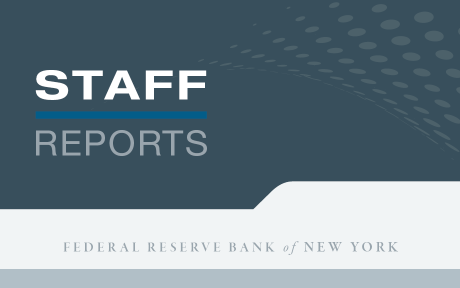
Nonbank financial institutions (NBFIs) constitute a variety of entities—fintech companies, mutual funds, hedge funds, insurance companies, private debt providers, special purpose vehicles, among others—that have become important providers of financial intermediation services worldwide. But what is the essence of nonbank financial intermediation? Does it have any inherent advantages, and how does it interact with that performed by banks? In this Liberty Street Economics post, which is based on our recent staff report, we provide a model-based survey of recent literature on nonbank intermediation, with an emphasis on how it competes, or cooperates, with traditional banks.
The Entity Versus Functional Approaches to Financial Intermediation
The traditional perspective to examining financial intermediation consists of grouping entities (for example, banks, broker-dealers, and finance companies) into “sectors” that are assumed to carry on similar types of activities over time. Such an entity approach takes the institution or legal form of entity as the primitive object of study to then evaluate how these organizations operate. This approach is less useful in modern times as the boundaries between organizational entities and activities are increasingly fluid. For example, modern banks are increasingly engaged in a variety of services usually perceived as “nonbank” activities, such as underwriting loans, warehousing and servicing the loans, and providing insurance. Likewise, nonbank entities have been engaging in bank-type strategies: for example, private credit firms lend to corporations, and money market fund deposits are available on–demand (similar to uninsured deposits).
Instead, the functional perspective considers “economic functions”—such as providing safe assets and managing incentives—as the more appropriate unit of analysis. Indeed, Merton (1995) argues that such economic functions—which fulfill a basic economic need—tend to be more stable, with the observed entities simply reflecting the best institutional structures to carry out those functions under given economic conditions. This view is permeating regulatory domains, too, precisely in the context of NBFIs performing activities like those carried out by other, more regulated entities.
A Model-Based Survey Using the Functional Approach
In a recent paper, we operationalize the functional approach to better understand the nature of NBFI activities. We do this through developing a model-based survey on NBFIs. Concretely, we first integrate different theories about nonbanks under a common economic modeling toolkit. Then, without taking a predetermined stance on entities, we let the model “speak” as to the best ways to provide certain services valued in an economy.
This approach provides a more holistic view of the NBFI ecosystem: it allows us to better understand which needs these intermediaries fulfill; whether they compete or cooperate with banks in the process; and what have been the key drivers behind their emergence. And this is done without “hard wiring” into the model specific results about desired entities, since the intermediaries organically self-select—through competitive forces or contractual arrangements—into different methods for providing the fundamental financial functions that economic agents demand. The figure below illustrates our approach, depicting a “core game tree” at the center that constitutes our basic laboratory of analysis and is specialized into specific functions (the intermediate layer), such as safety, transference, and incentives. After obtaining equilibrium strategies for providing a function, we connect them with entities in practice (the outer layer).
From Intermediation Functions to Strategies and Then Entities

One question that we ask is how macroeconomic conditions affect the rise and decay of financial strategies linked to NBFIs. We study two important cases: special purpose vehicles (SPVs) issuing securitized products as a method to provide safe assets and private credit companies lending to risky borrowers that must be incentivized to repay.
Securitization
The way through which securitization creates safe claims is by pooling many related assets to eliminate their idiosyncratic risk, and then tranching (that is, segmenting) the resulting payouts to provide payment schedules that differ in their risk. Importantly, the payments of the senior (and safest) part of the resulting security can be nontrivial due to the diversification at play: they constitute a minimum return, assuring a guaranteed payment to investors in the senior tranche.
We compare this strategy to “mutual fund-like” strategies featuring claims that, to provide a safe attractive payment, rely on the possibility of liquidating the underlying assets before these mature. Thus, this strategy offers an “early escape” from adverse scenarios that will be realized in the future, whereas securitization offers minimum payouts precisely linked to those adverse states.
This distinction implies that the type of macroeconomic uncertainty matters for the profitability of each. In an “upside economy,” the outlook is such that there can be meaningful growth even during less favorable scenarios, which enables securitization to generate high payoffs through pooling and tranching. On the other hand, if pessimistic news about some assets arrives at an interim date, the likelihood of growth becomes lower than originally expected, thereby creating a motive to sell. But because of the downgrade, the resale value of such individual assets is low: the safety premium commanded by an early liquidation strategy then falls short of that provided by securitization.
Conversely, if the economy suffers more pronounced and persistent downsides, a mutual fund strategy can dominate securitization for two reasons. First, the latter provides a lower safety premium due to the less favorable economic outlook. Second, if bad and good states are not distinguishable early on when news about individual assets arrive, the resale value of individual assets need not be too low (because such values also price the possibility of being in good, but slowly unfolding, states of the economy).
Private Credit
Whereas the previous example featured two strategies competing for dominance in the “market for safety,” our second application to private credit has more of a cooperative flavor. Here, we show how intermediaries that differ in their funding structure—say, those with low funding costs resembling banks and others that look like nonbanks—can establish mutually beneficial contractual arrangements; in this scenario, banks lend funds to nonbanks so that the latter offer credit in segments that banks find too costly to serve, just as banks are doing now in lending to private credit firms. Indeed, a high-cost funding structure can carry a strategic advantage: the threat of discontinuing credit to underperforming borrowers becomes more credible, thus inducing better behavior by the borrowers.
In high-interest-rate environments, if nonbanks find it unattractive to lend due to their high funding costs, banks can offer funds to nonbanks (by extending credit lines, for example) at a lower rate. This transaction is profitable for both parties: nonbanks are able to lend to risky borrowers for a profit—and part of their income returns to banks in the form of interest payments. As nonbanks’ funding costs increase with rising interest rates, cooperative arrangements between banks and nonbanks are more likely to emerge. Conversely, as rates fall and the gap between bank and nonbank funding costs shrinks, nonbanks will rely less on banks and competition will be fiercer (but only partially, because each intermediary can specialize in sectors with different risk levels).
Final Words
In this post, we discussed a recent survey on NBFIs that helps illuminate how they might optimally specialize vis-à-vis banks and made applications to special purpose vehicles and private debt provision. Our approach starts with economic functions that fulfill fundamental needs of households and then derives intermediation strategies that best provide these functions. This exercise allows us to better understand the key drivers behind the emergence of NBFIs and how they compete or cooperate with banks.

Nicola Cetorelli is head of Financial Intermediation in the Federal Reserve Bank of New York’s Research and Statistics Group.

Gonzalo Cisternas is a financial research advisor in the Federal Reserve Bank of New York’s Research and Statistics Group.

Asani Sarkar is a financial research advisor in the Federal Reserve Bank of New York’s Research and Statistics Group.
How to cite this post:
Nicola Cetorelli, Gonzalo Cisternas, and Asani Sarkar, “Nonbanks and Banks: Alone or Together?,” Federal Reserve Bank of New York Liberty Street Economics, May 21, 2025, https://libertystreeteconomics.newyorkfed.org/2025/05/nonbanks-and-banks-alone-or-together/
BibTeX: View |
Disclaimer
The views expressed in this post are those of the author(s) and do not necessarily reflect the position of the Federal Reserve Bank of New York or the Federal Reserve System. Any errors or omissions are the responsibility of the author(s).













 RSS Feed
RSS Feed Follow Liberty Street Economics
Follow Liberty Street Economics